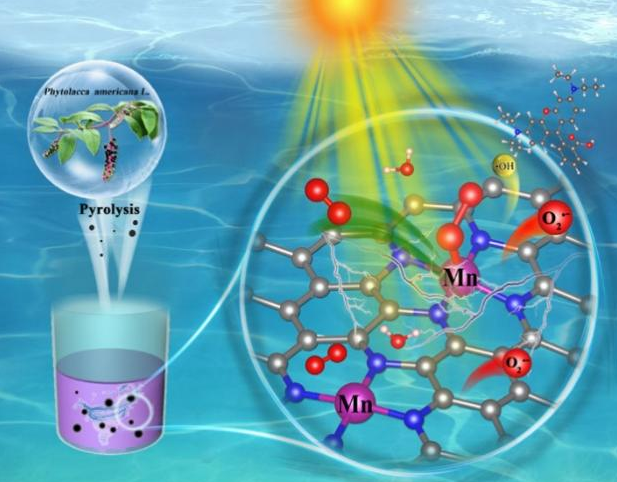Atomically Dispersed Manganese on Biochar Derived from a Hyperaccumulator for Photocatalysis in Organic Pollution Remediation
Fig. Graphical abstract
Phytoremediation is a potentially cost-effective and environmentally friendly remediation method for environmental pollution. However, the safe treatment and resource utilization of harvested biomass has become a limitation in practical applications. To address this, a novel manganese-carbon-based single-atom catalyst (SAC) method has been developed based on the pyrolysis of a manganese hyperaccumulator, Phytolacca americana. In this method, manganese atoms are dispersed atomically in the carbon matrix and coordinate with N atoms to form a Mn–N4 structure. The SAC developed exhibited a high photooxidation efficiency and excellent stability during the degradation of a common organic pollutant, rhodamine B. The Mn–N4 site was the active center in the transformation of photoelectrons via the transfer of photoelectrons between adsorbed O2 and Mn to produce reactive oxygen species, identified by in situ X-ray absorption fine structure spectroscopy and density functional theory calculations. The work of Professor Wang Yujun and his team demonstrates an approach that increases potential utilization of biomass during phytoremediation and provides a promising design strategy to synthesize cost-effective SACs for environmental applications.
Source: American Chemical Society

